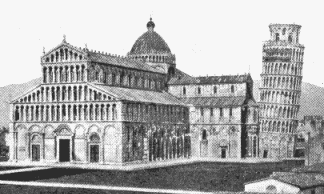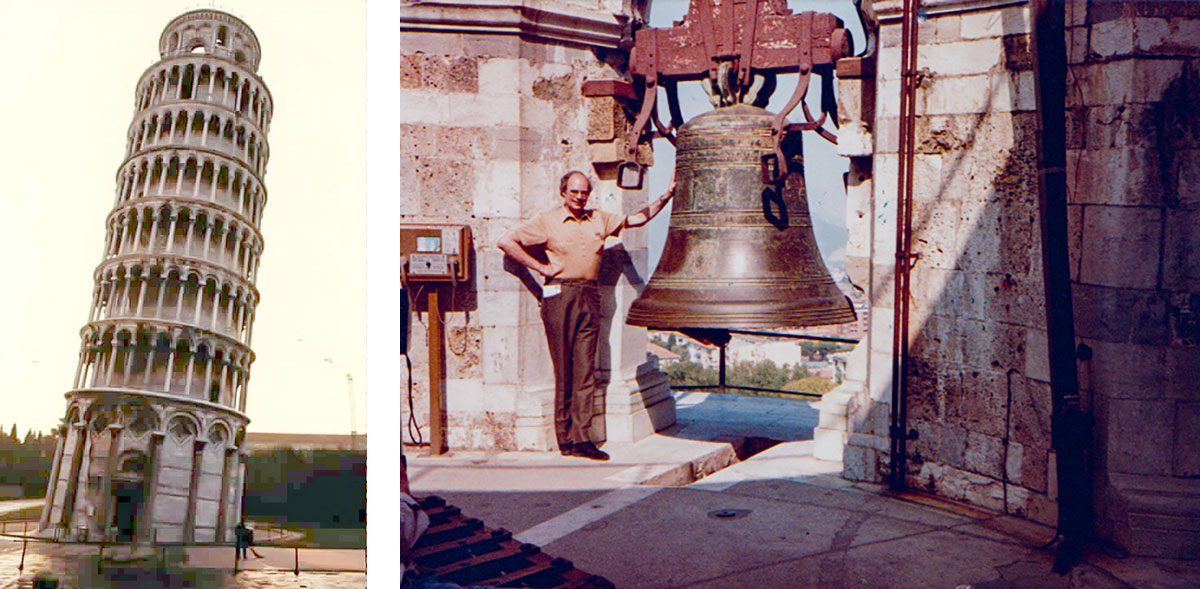The Leaning Tower of Pisa
Today, we visit the Leaning Tower of Pisa. The University of Houston's College of Engineering presents this series about the machines that make our civilization run, and the people whose ingenuity created them.
Medieval architects outreached themselves. The Gothic buildings that stand are a remarkable legacy. But we don't see the failures. Well, that isn't entirely so. We see a few. In fact one failure, the Leaning Tower of Pisa, is a marvel to see.
The Leaning Tower, like many other old Tuscan towers, sits on soft soil. It's only one of many that've gone askew in various ways. But none is more dramatic. Its height, after 800 years of tilting and sinking into the soil, is about 184 feet.
I always thought of the Tower as a Renaissance building, but it's older than that. Its construction began way back in 1173. When builders finished the first third, they found it'd tipped 0.2 degrees to the northwest. So they put it on hold for a century. By then the tilt had extended to 0.7 degrees.
Yet the city fathers resumed construction anyway. Masons squared off the top of the tilted stump and built upward. The Tower tilted again, this time to the north. They stopped again. For another century the Tower sank and tilted — to the north, to the east, and finally to the south.
With the Tower now leaning almost 2 degrees to the south, work went ahead once more in 1373. Masons squared off the top a second time and finished the Tower. Now the top was straight, but the lower portion had a gentle but permanent corkscrew shape.
The Tower has continued tilting at an average rate of 21 seconds each year. Now it moves only 7 seconds per year, but that's cold comfort when it leans almost 5½ degrees off vertical — nearly a 10% tilt.
And so it stands, majestic and eerie -- defying the rules of fall that Galileo was supposed to have learned on its summit. Walk with me to the top. The stair coils about the outside. You cringe against the wall each time you negotiate the south face and hang over empty space. You reach the summit, short of wind, and gaze out over the ancient intellectual center of Pisa. But there's one more tight circular staircase. Take a deep breath and mount it. Now you gaze down, even on the bells. Nothing more separates you from the blue Tuscan sky.
And all the time you wonder what medieval magic keeps the Tower from abruptly finishing its fall while you stand there. Civil engineers have learned what its medieval builders did not know about foundations, but they haven't learned to end the Tower's movement. With an animal obstinacy, it curbs experiments. It responds to each measure by tilting faster. It teases our minds with its crazy, slow-motion, corkscrew fall.
I'm John Lienhard, at the University of Houston, where we're interested in the way inventive minds work.
(Theme music)
Kerisel, J., A Few Hidden Errors in Medieval Architecture. Down to Earth. Boston: A.A. Balkema, 1987.
This episode is from 1990. Since then the saga of the tilting tower has continued. For its present status, see:
https://en.wikipedia.org/wiki/Leaning_Tower_of_Pisa

From the 1911 Encyclopaedia Britannica

Photos by John and Carol Lienhard
In the images on top and to the left, notice the very slight corkscrew shape. The photo on the right was taken in 1982 in the bell area at the very top -- not long before the tower was closed to all public traffic.